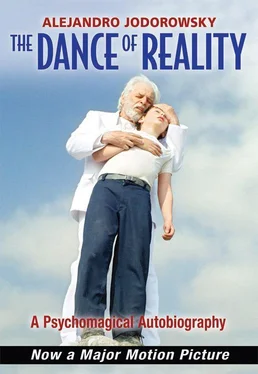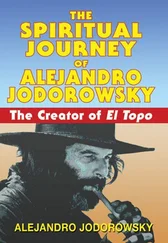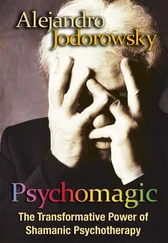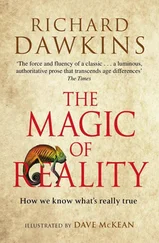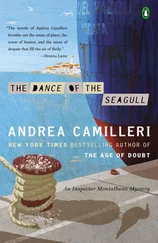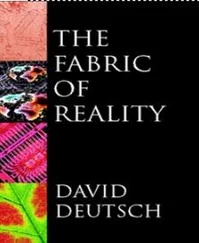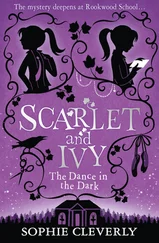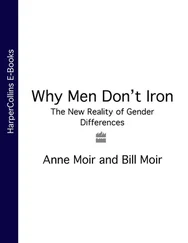Strangely, perhaps due to the magic of the puppetry, my parents’ attitude toward me was more understanding and loving once I decided to resume relations with them. Also, my grandmother, without ever mentioning the tree incident, invited me to have tea with her and, for the first time ever, gave me a gift: a watch that had an elephant in place of hands, marking the minutes with its trunk and the hours with its tail. A miracle! I explained to myself that the image we have of another person is not that person but a representation. The world that is imposed on us by our senses depends on our way of seeing it. In many ways, the other is what we believe it to be. For example, when I made the Jaime puppet I modeled it in the way I saw him, giving him a limited existence. When I brought him to life in the miniature theater other aspects that I had not captured came to light, rising up from my obscure memory and transforming the image. The character, enriched by my creativity, evolved to reach a higher level of consciousness, changing from fierce and stubborn into friendly and full of love. Perhaps my individual subconscious was closely linked to the family subconscious. If my reality was different, then my relatives’ reality was also different. In a certain way, when a being is portrayed a nexus is established between the being and the object that symbolizes it. Thus, if changes come about in the object, the being that gave rise to what it represents also changes. Years later, when studying medieval witchcraft and magic, I saw that this technique had been used to harm enemies. A necklace made that contained hairs, fingernails, or shreds of clothing from the intended victim was put on the neck of a dog that was then slaughtered. After engraving a patient’s name in the bark of a tree, incantations were recited in order to transfer the disease to the tree. This principle has been preserved in popular witchcraft in the form of pictures or wax figurines that are impaled with pins. My attention was also drawn to the belief in the transfer of personality through physical contact. Touching someone or something means, in a certain way, becoming it. Medieval doctors, in order to heal knights wounded in tournaments, used to spread their healing ointments on the sword that had inflicted the wound. I was not aware of this topic at that time in my life, and yet I applied it intuitively and in a positive way.
I told myself, if the puppets I make come to life and transmit their essence to me, instead of creating characters I despise or hate why not choose characters who can transmit a knowledge that I do not yet possess? During those years Pablo Neruda was regarded as the greatest poet, but like many young people a spirit of contradiction caused me to refuse to be his ardent follower. Suddenly, there came a new poet, Nicanor Parra, who rebelled against the genius Neruda who was so visceral and politically compromised, writing verses that were intelligent, humorous, and different from all other known poetry; these he dubbed “anti-poems.” My enthusiasm for this was delirious. Finally an author had descended from the romantic Olympus to discuss his everyday anxieties, his neuroses, his sentimental failures. One poem above all made an impression on me: “The Viper.” Unlike Neruda’s sonnets, this poem was not about an ideal woman, but about a real bitch.
For many years I was condemned to worship a despicable woman,
To sacrifice myself for her, to suffer countless humiliations and ridicule,
Working day and night to feed and clothe her,
Perpetrating some crimes, committing some offenses,
Small thefts by the light of the moon
Falsifications of incriminating documents
Under the threat of falling into disgrace in her fascinating eyes.
How great was my envy, having never even made love to any woman, of Nicanor Parra having known such an extraordinary female!
For long years I lived as a prisoner of this woman’s charm
She used to show up in my office completely naked
Performing the most difficult contortions imaginable.
I immediately made some paste and started to model a puppet representing the poet. The newspaper had not published any photos of him, but in contrast to Neruda, who was rather bald, stocky, with a Buddha-like air, I sculpted Parra with hollow cheeks, intelligent eyes, an aquiline nose, and leonine hair. Enclosed in my little theater I manipulated the Nicanor puppet for hours, making him improvise anti-poems and, above all, relate his experiences with women. Stifled by my chastity, having had a mother whose torso was always encased in a corset and who blushed at the slightest sexual reference, women appeared to me the greatest mystery of all. but once I was imbued with the spirit of the poet, I felt myself capable of finding a muse, preferably on par with the Viper.
In the city center, Café Iris opened its doors at midnight. There, illuminated by cruel neon tubes, the night owls drank beer on tap or else an extremely cheap wine that made them shudder with every sip. The waiters, all dressed in black uniforms, were older people who walked unhurriedly from table to table, taking small steps.
In this calm place, time seemed to stand still in an eternal instant where there was no room for sorrow or anguish. Nor was there room for any great happiness. They drank in silence, as if in purgatory. Nothing new could happen there. And yet, on the very night that I decided to go to Café Iris to find the woman who would become my ferocious muse, Stella Díaz Varin was there. How to describe her? It was 1949, and we were in the most remote country, where no one wanted to be different from everyone else, where it was almost mandatory to wear shades of gray, where the men had to have closely cropped hair and the women had to have chitinous coiffures sculpted at beauty salons, forty years before the first punks emerged. I had just settled down over a cup of coffee when Stella (who had just been fired from the newspaper La Hora for her article about the deforestation brought about by the logging industry, which would later devastate the southern part of the country) appeared before me shaking her amazing head of red hair, a sanguine mass that reached below her waist; it was not hair but a mane. I am not exaggerating, never in my life have I met a woman with such thick hair. Rather than powdering her face, as was customary in Chile at that time, she had painted it pale violet using watercolors. Her lips were blue, her eyelids were covered with green eye shadow, and her ears were shining, painted gold. It was summer, but over her short skirt and a sleeveless shirt that highlighted her arrogant nipples she wore an old fur coat, probably made of dog hair, which came down to her heels. She drank a liter of beer, smoked a pipe, and without paying attention to anyone, locked in her own personal Olympus, she wrote something down on a paper napkin. A drunken man approached her and whispered something in her ear. She opened her coat, lifted her shirt, showed him her opulent breasts, and then quick as lightning dealt him a blow to the chin that sent him sprawling three meters away on the ground, unconscious. One of the old waiters, not greatly perturbed, poured a glass of water on his face. The man got up, offered humble apologies to the poet, and went to sit in a corner of the café. It was as if nothing had happened. She continued writing. I fell in love.
My encounter with Stella was fundamental. Thanks to her I was able to move from the conceptual act of creation, through words and images, to the poetic act with poems resulting from a sum of bodily movements. Stella, defying social prejudices, behaved as if the world were a ductile material that she could model at will. I asked the old bartender if he knew her.
Читать дальше
